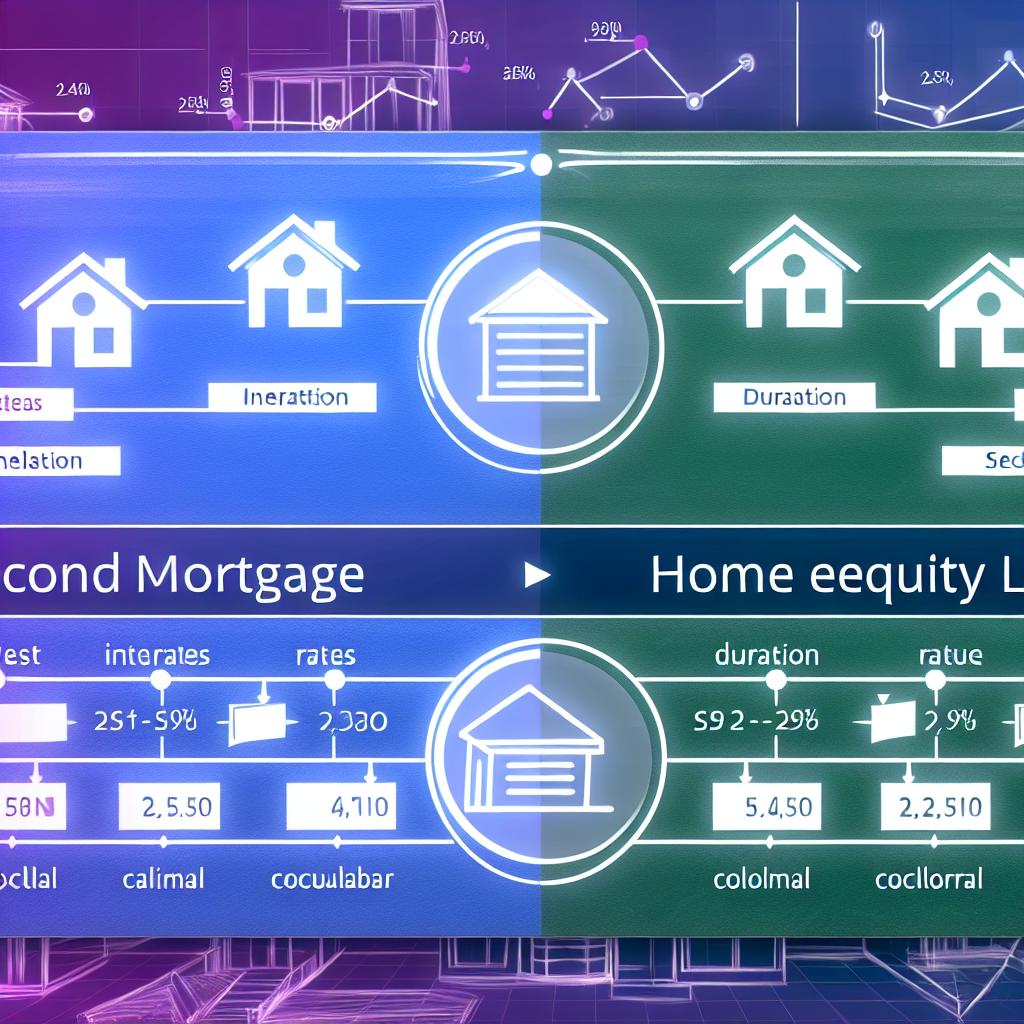
When it comes to leveraging the value of your home, both second mortgages and home equity loans are popular options. While they might seem similar at first glance, these financial products have distinct characteristics. Understanding these differences can help homeowners make informed decisions.
A second mortgage is a loan taken out on a property that already has an existing mortgage. Essentially, it is a subordinate loan, which means it is secondary to an existing mortgage. Should you default, this second loan will only be paid with the proceeds remaining after the first mortgage is settled. The interest rates for second mortgages can be slightly higher due to the increased risk for lenders.
One notable feature of a second mortgage is its flexibility. Homeowners can obtain substantial funds without refinancing their original loan, making second mortgages suitable for large expenses like home renovations. In many cases, these expenses may include extensive repairs, significant landscaping projects, or even major interior upgrades. With a second mortgage, homeowners have an opportunity to enhance their property’s value, potentially providing a return on investment in the long run.
A second mortgage can also be a beneficial financial tool for those looking to consolidate high-interest debt. By paying off various debts with the borrowed funds, homeowners can potentially lower their overall interest payments. However, it is important to manage these consolidated debts carefully, as failure to do so can lead to financial strain.
A home equity loan, often referred to as a “second mortgage” in casual conversation, is specifically a type of second mortgage. It allows you to borrow against the equity you’ve built up in your home. Essentially, it is a lump-sum loan that is paid off over a fixed term.
This type of loan typically comes with fixed interest rates, which can be advantageous for those who appreciate predictable monthly payments. The fixed rate adds an element of stability, allowing homeowners to plan and budget more effectively. Because home equity loans are secured by your property, they can provide a relatively low-interest financing option compared to unsecured loans or credit cards.
Home equity loans can be particularly useful for major expenses such as medical bills, education costs, or starting a small business. Given that the funds are disbursed all at once, they can provide immediate liquidity for significant financial commitments. Moreover, the fixed-term structure ensures that the loan is systematically paid down, offering a clear path to financial resolution.
While both financial instruments allow you to tap into your home equity, there are key distinctions between them:
Structure and Purpose: A second mortgage refers to any loan that is secondary to the primary mortgage, while a home equity loan specifically refers to borrowing a single lump-sum against home equity. This difference in structure often dictates the way homeowners can utilize the funds. While the flexibility of a generalized second mortgage might cater to varied borrowing needs, a home equity loan’s lump-sum nature is more straightforward and often simpler to manage for specific predetermined expenses.
Interest Rates: Second mortgages might have varying interest rates based on their risk, whereas home equity loans generally offer fixed, predictable rates. This factor is crucial for homeowners to consider, as the stability of a fixed interest rate in a home equity loan can protect against fluctuating market conditions.
Payment Flexibility: The borrowing structures offered by a second mortgage allow homeowners different repayment strategies. In contrast, home equity loans are more straightforward as a one-time lump sum, which could encompass less flexibility but more predictability in financial planning. This element can aid in aligning one’s debt obligations with financial goals and capabilities.
In summary, while second mortgages and home equity loans allow homeowners to access the equity of their homes, the terms, structure, and flexibility of these financial products vary. Homeowners should consider their financial situation, the purpose of the loan, and the loan structure that best suits their needs. By comprehending these distinctions, homeowners and prospective borrowers can better match their financial decisions with their long-term objectives.
Furthermore, it is essential for borrowers to explore additional resources beyond the basic description of these loans. For instance, evaluating the costs associated with each loan, such as closing fees, and understanding the long-term commitment each option entails are pivotal steps. Also, exploring how potential economic shifts might affect one’s capacity to fulfill loan obligations can create a wider perspective.
For more information on home financing options, consider visiting reputable financial advisors or lending institutions to further explore these options. Engaging with professionals who understand the intricacies of financial products could provide supplemental insight and potentially illuminate opportunities that align with personal fiscal goals. It is through a blend of education and strategic planning that homeowners can fully leverage their home’s value with confidence and prudence.
This article was last updated on: July 7, 2025